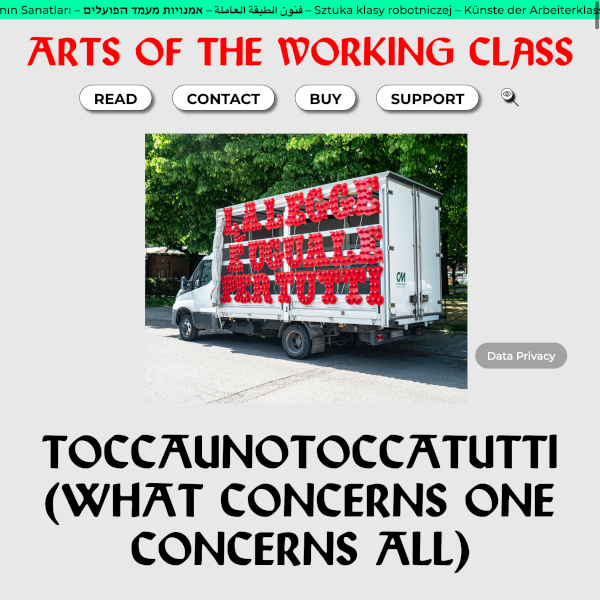Tocca uno tocca tutti / What concerns one concerns all
1 febbraio 2024

A text by Angelika Stepken published in Arts of the working class.
The city of Prato, located around 20 km northwest of Florence, has 194,000 inhabitants, a good quarter of whom are foreigners. Since the Renaissance, it has a long history in the textile industry. To this day, the XIV century archives of the long-distance trader and wool producer Francesco Dantini are frequently cited by international researchers interested in the history of the city. In the Post-war period, Prato was the “rag center of Europe” and attracted workers from the south of Italy. In the 1980s, migrants from the small town of Wenzhou in the Zhejiang region in China came to the flourishing industrial metropolis - initially as guest workers. Ensuing years saw them setting up their own companies. Over time, Prato became the largest textile production site in Europe and it had the largest Chinatown in Europe with, officially, 23,000 Chinese residents and approximately 124 different ethnic groups living there. 42,000 workers were employed in Prato’s export economy in 2021, profits of which increased by 44% in the textile industry, and 94% in the clothing industry in the same year. Up to 1.5 million euros are transferred to China from the city every day. To sustain this exponential growth, labor...
(read all)
Tocca uno tocca tutti / What concerns one concerns all (full text)